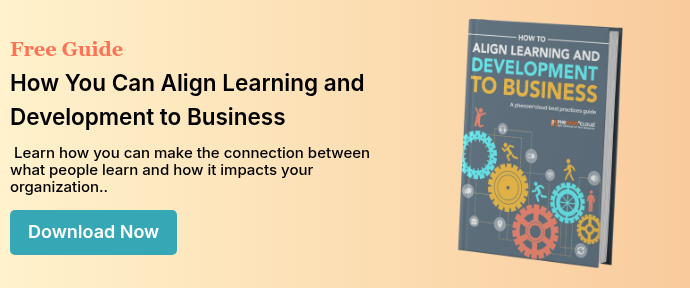
Learning and Development leaders are under pressure to measure learning. CFOs want ROI. CEOs want impact measures. Everybody wants efficiency, effectiveness, and a great user experience.
Today’s technology offers many creative ways to measure learning efficiency and effectiveness. We can capture virtually any data point in e-learning, and tracking classroom training is easier than ever.
The Challenge of Monitoring Offline Informal Learning
The problem is that much of the most effective learning takes place offline. People learn by doing – dealing with the tasks and challenges of the job. Nowhere is this offline learning more impactful than in mentoring future leaders. The 70-20-10 rule, developed by the Center for Creative Leadership over 30 years ago, serves as a general guideline to help us remember that most of what we learn is through experience.
Dr. Tacy Byham, CEO of Development Dimensions International, gave us a new set of numbers to ponder: 10,000-66-31. It takes 10,000 hours to learn an accomplished professional, 66 days to develop a new habit. However, organizations provide only 31 hours of training per year. Here point is that giving new leaders a training session builds excitement and awareness, but doesn’t create long-term value.
Blended learning is a partial solution. It enables us to use performance support and micro-learning to deliver knowledge, training, and simulations anywhere and anytime at the point of need. However, much of the most valuable learning happens off the grid in face-to-face conversations, and in leadership development, mentoring can be the most critical component.
Besides mentoring, a well-designed leadership development program will include formal training, social networking, and developmental assignments. We can track all those in an LMS. Measuring mentoring, however, presents a different challenge.
The standard answer in the industry is to measure mentoring outcomes by establishing success criteria around employee engagement, retention, and productivity. Those measures are important, and moving those metrics should be the focus of the program. However, in a process that can take months or years, how can we know how the programs work without placing an administrative burden on participants?
Dealing With Resistance
Our experience over the past two decades shows that expecting managers and mentors to document informal coaching and mentoring sessions is often unrealistic. In an extreme case, we implemented a feature in a performance management app that gave managers one-click access to record notes. A year later, the client told us they had two records for a population of over 8,000 employees. Not two employees with notes – two notes!
We can plug in technology solutions that can track scheduled activities, such as Outlook meetings, but what about the unscheduled face-to-face informal contacts that can have more impact than all others combined?
One solution might be to push out short surveys, so that users can complete them in a minute or two. We would need to stifle our tendency to want to collect all the data we can, and collect only the most vital information.
What do you think? Is there a way to capture informal exchanges without being a pain?
PhenomᵉCloud is a comprehensive technology solutions provider committed to empowering businesses to overcome challenges, enhance their workforce capabilities, and achieve superior outcomes.


Leave a Comment